I would think that most of you have either heard of Tom Cotter, also known as The Barn Find Hunter, or you have seen his regular video clips. Well, today we have something different from Tom, and the roots of the story go back to June of 2018. It’s a great story, and it proves a couple of things. The first is that there are times when he doesn’t just look at these old cars, but actually takes steps to return them to the road. The second thing that it proves is that you can take a pretty sad looking (but essentially solid) piece of machinery, and turn it into something pretty nice on a fairly realistic budget. In this case, Tom spotted this 1962 Ford Country Sedan, and some instinct kept taking him back to it. So here’s what happened.
As is his usual practice, Tom was on the lookout for likely locations that might contain interesting old cars back in June 2018. His intention was to spend three or four days looking around Midland, Texas, seeing what he could find. In a chance encounter, he spotted a yard full of old cars and approached the owner, a gentleman by the name of Tom Cross. This yard had a fair collection of older Fords, and many had been accumulated more than 30-years-ago. Mr. Cross was on the point of scrapping the cars when Tom showed up, and after a look around the yard, he was drawn back to the Country Sedan. The old Ford still wore its original paint, and Tom decided to prove that these can be polished back to life. So, out in the Texas sun, he polished this small spot on the front fender. The results were pretty good.
Anyway, Mr. Cross appears to be an accommodating fellow and used a set of forks to move the vehicle over to his workshop. Here Tom took to the same fender with a buffer, and the result of this effort was pretty impressive. Anyway, as you will see in the YouTube video below, that’s where the story ended. Or, did it?
That old Country Sedan really got into Tom’s head, so he decided that it should be returned to the road, just to prove that an old car can be revived and transformed into a head-turner with relatively little money.
One year later, and you can see the results. The Country Sedan still wears its original paint across the whole car, except for the top. It has been buffed and polished, and the floors have been repaired. There is still some minor rust in the body, but it seems to just adds to the character of the car.
My favorite part of the body is the top. Some students came in to clean the top down in preparation for a repaint in its original white. After rubbing it down, they really liked the look of it the way it was. The decision was made to apply a clear coat over the rust. Using an old hot rodders trick, corn starch was added to the clear, giving a great satin look. As Tom points out, the top now has the appearance of old leather.
Powering the ’62 is a 390ci V8, running a 650 Holley carburetor. The engine is freshly rebuilt and showed 325hp on the dyno. This sends the power to the 9″ rear end via a 3-speed automatic transmission. That engine sounds really sweet, and it certainly doesn’t lack anything in the way of performance.
The interior is a mix of old and new, and every electrical item and accessory inside the car works as it should. There is no headliner, but there is a neat layer of Dynamat that I actually don’t mind. The original seat was looking a bit ragged, so it was given some new stuffing, and then bound up with tape. An upholsterer created a new cover from a Mexican blanket, and I think that it looks quite nice.
I guess that now is the time when we need to talk about what a project like this would cost. Tom and the crew acknowledge the fact that they had sponsors to assist them with parts and mechanical components. They estimate that in cold, hard cash, they sank $8,000 into the Ford. The contribution by the sponsors would equate to a further $7,000. That means that for $15,000 and with a bit of hard work, the car that you see is the final result.
That’s really not the end of the story, because now the car has been finished down in Midland, Texas, Tom has hit the road in the old girl. His ultimate destination is McPherson College, located in McPherson, Kansas. The car is being donated to the students there who are undertaking a 4-year Bachelor’s Degree in Automotive Restoration. The Country Sedan is going to replace their aging Chevy Luv as the shop wagon. It also isn’t the end of the story for potential projects, because as you’ll see below, there are still a few left in that yard in Texas.
One car that is still awaiting restoration is this 1963 Fairlane. It has a 260ci V8 under the hood, it appears to be complete and fairly solid, and it can be yours as a project for $2,000.
One of the rarer birds is this 1960 Ford Ranch Wagon. This is a 2-door wagon that is going to need some work, but it does come complete with a parts car. The asking price for the pair is $4,500. So it seems that there are some pretty decent and affordable project cars to be found out in the big, wide world.
For those of you who wonder whether a project car is for you, or worry about just how much a project will cost, I can only offer you three small pieces of advice that I’ve managed to accumulate with my own project cars. The first is to build a network of like-minded people. If you are considering taking on a project car, go to shows, attend any Cars & Coffee days that you might hear about, and approach people with similar cars. Talk to them and ask questions. By and large classic car enthusiasts welcome new people into their ranks, and will tend to be able to steer you in the right direction before you head down any blind alleys. The second piece of advice that I would give you is that you shouldn’t be afraid to get your hands dirty. One of the great ways to save money on a project car is to take on the simple tasks yourself. This includes pulling things apart, reassembling what you know that you can assemble, and take on all of the cleaning tasks yourself. You will save money, and you will get the satisfaction that can only come from achieving something for yourself. And finally, don’t be afraid to make mistakes. I doubt that you will ever find classic car enthusiast who hasn’t made a mistake during a project build. It is important to just learn from them. And above all else, make sure that you enjoy yourself.

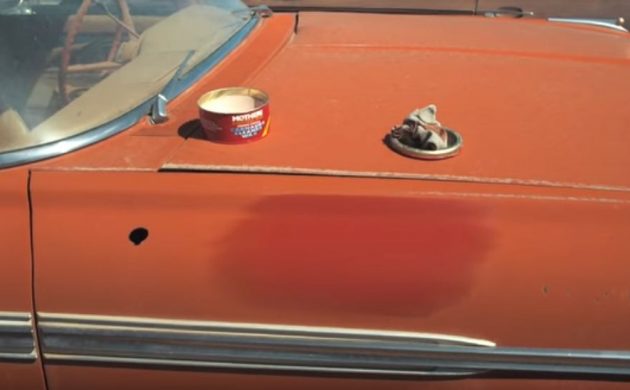

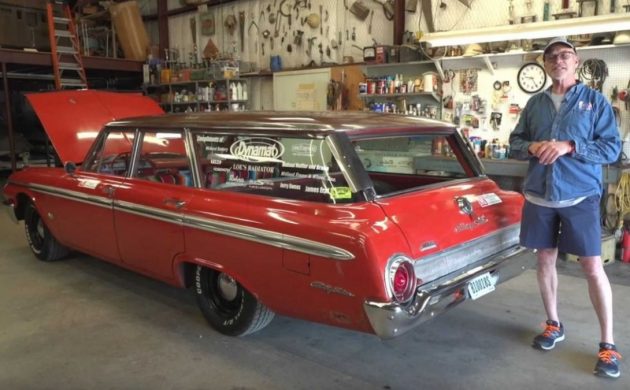
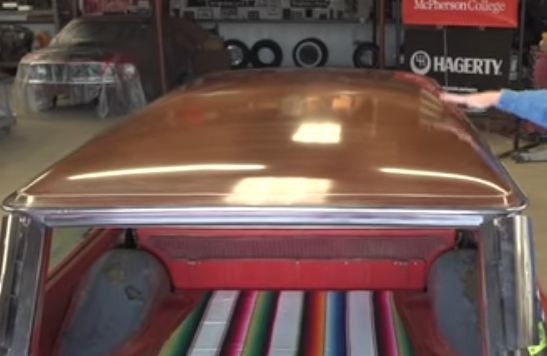


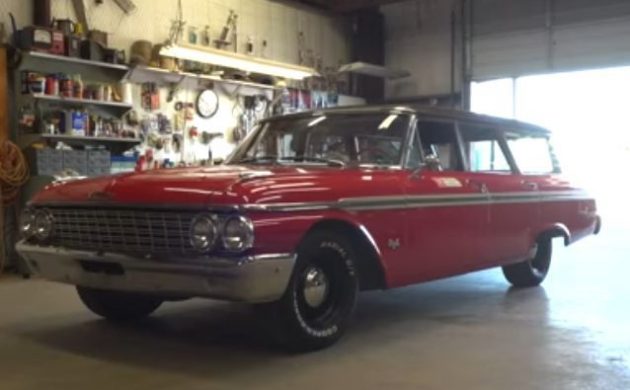
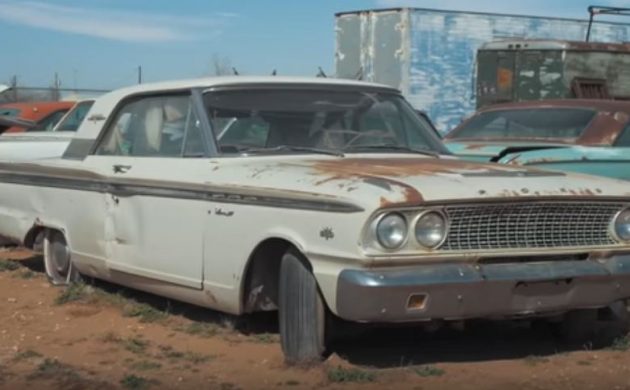
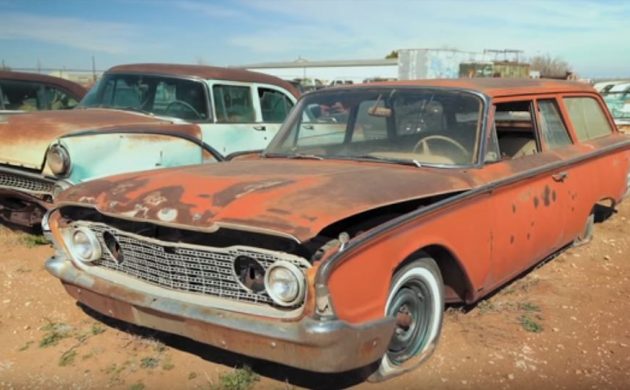


An excellent write up, Adam-thank you for keeping it real and giving our interest the perspective we need at a time that it’s easy to get discouraged by crazy prices for POS rust buckets.
From what we read of Mr. Cotter, it seems a large portion of his research is talking with-or more importantly, LISTENING to-people everywhere, which is an art of its own. Too, your advice insofar as interactive communication is right on the money-it’s difficult to feel enthusiasm through an electronic manuscript, though the BF editors and readers do a good job at it.
Thank you, Adam.
People that can buff out a car correctly saving the paint are artists. ( I wish I was one of them. Even though I know the basics and the things not to do. I do not have the skill or the patience. ) My first Fox body Mustang was a 1980 that was originally a turbo car. The turbo was gone and a replacement 2.3 from a Ranger was sitting in the engine bay. It barely ran the A/C did not work ( the lines were reversed) and it still had the TRX wheels in the luggage area with ugly chrome wheels on the ground. The car was an ugly pinkish color. I was able to get it running correctly, sold all the wheels and found some black CHP steel wheels and some Gatorback tires in good shape and some 15″ trim rings and found a set of Mustang II screw on center caps in the junk yard. One of the guys that I worked with was an ace with a buffer. I paid him $60 to buff the car. It came out the most beautiful diamond red color. Everyone thought the it was a different car. Between the paint and the different wheels and tires it was a looker. Slow, but a very nice ride in the summer with the A/C cranking. Total investment was $60 after the cash for the sold wheels.
I did it by hand on a 64′ Ford Falcon. The Falcon sat in my friends back yard for about 5 years under a tree. I hand Compounded it out & then Waxed it. Best part it had no rust or dents anyway on it. It did have a Bad Engine. I put my 289 HP & C4 in it. Wish I had it today. Oh yea, I paid my friends father $50.00 for it.
Loved to see that 1963 Fairlane with a 260! I took driver’s education in ’63 in what could have been that exact car!
A story like this makes me so damn happy!! This car was going to be crushed what a shame that would have been!!! Now it’s a daily driver!!! All a can say is don’t crush them for scrap!!! To make more new computer driven cars that last ten years then end up with computer issues that only the dealer can fix!!! Get the old running and if it breaks down there’s a lot better chance your going to be able to fix it yourself!!! Without a computer!!!
The guy with the yard wasn’t going to crush it. Almost every car that was in the original video was in the video showing the wagons “restoration”. In the time between videos they alluded to helping “buyers” get in touch with the owner.
Steve R
Great story! It gives me hope that one day I will find a project that is within my skill level and budgetary limits. Were I in a position to take on a project, I’d be looking closely at the Fairlane.
Congratulations, Tom. This effort deserves a standing ovation.
Saw the original video when Tom discovered this car on the Hagerty monthly newsletter back then…Happy to see this follow up here on Barn Finds….Great write up too…
Love that the beautiful red Country Sedan was saved but count me as one who intensely dislikes rust, aka “patina”. That poor car managed to survive 57 years with just the roof being a rusty mess. Having put myself through school working at my Uncle’s auto body shop, I can tell you first hand, that rust never sleeps and that clear coat will not properly adhere to rust, prevent further rusting, nor stand up to the sun’s UV rays.
Give the old gal some respect and remove every trace of rust, treat the metal, and prime and paint the top just like she came from the factory, so future generations will get to see this same beautiful car, still shining in all her red glory.
I do hope more of those Fords are saved from that yard, most look promising and the prices seem down to earth.
I could not agree more! To me, this “look” (I’m intentionally avoiding the “p” word) does nothing for the car. On the other hand, I’d have been happy if the roof were prepped as stated above and painted an appropriate Ford white instead of the presumably original red!
Clone Tom! We need more like him.
Contact information for Tom Cross’s yard? I need front fenders for my 1956 Ford Ranch Wagon (my high school car!), any ’55-’56 Ford passenger car will work, with some work (may have to weld up some holes and drill other holes depending on the side trim). Please help! Thanks.
I was wondering what happened to this car. The “buffing” portion of the video clip was extremely short when the episode first appeared. Now we know Cotter wanted to scoop the car up for himself. Bravo! Wonder what corn starch does over time when living underneath a clear coat? Interesting that McPherson is where the car was donated–I applied for college there, along with Art Center College of Design (Gordon Buehrig was an adjunct professor) in 1979. I chose a college closer to home but always wondered how things may have turned out especially under the tutelage of Mr.Buehrig.
All the corn starch does is drop the shine level. The more added the less shine. During my apprenticeship in the mid 60’s we were taught to use talcum powder with the same results. We’d add some and do a test patch and keep going until the exact finish was achieved.
This is another lost painting trick.
cheers
kenzo
And the story of this wagon continues on for future car lovers. Its past history mostly forgotten but the spirit lives on. Once just iron ore mined from the ground smelted forged and formed into useable steel, fabric, rubber and other substances all lying dormant in this earth we call home. God created, God given for us to work live on and enjoy. To make things like this car, our homes, and the food we eat, the air we breathe. It’s really comforting to see there are people out there searching out and restoring such items for the enjoyment and education of future generations. I had not heard of a college course in automotive restoration. Bless them all, and may future generations prosper from such knowledge.
God bless America
I’m interested in that 56 Ford Fairlane shown. That was my first car that I bought from my Uncle for $20.00, rebuilt the 292 and drove the heck out of it my Senior year in High School. I have been looking for another ever since unfortunately most rusted away.
Great article
Do you have Tom Cross contact info. I’m interested in the 1969 ranch wagons.
I’d like to get in touch with Tom Cotter to see if he’d like to do something with a bit of a rare bird, 1986 Pontiac Tojan that just can out of a 25 plus year hibernation. He may be interested in this car, john C
@John – Send it in and we will feature it here on Barn Finds!
Is there an email specific? Or is there somewhere on this page to leave stats and pictures?
How about a 1966 Olds L69W30, 400BBO,with tri power, and forced air induction aircleaner, 4Speed, in Fairbanks Ak since ‘69 has 55,000 original miles, my Dad and Mom bought it from Brainbow Olds in Mass in late 66 as his street/strip car, is said to b number 20 of the original 54 factory race cars, and the only one with a vinyl top and deluxe chrome. He brought it with them to Fairbanks in 1969-70 to start a construction company but ended up a gold miner, doing that since 1977.